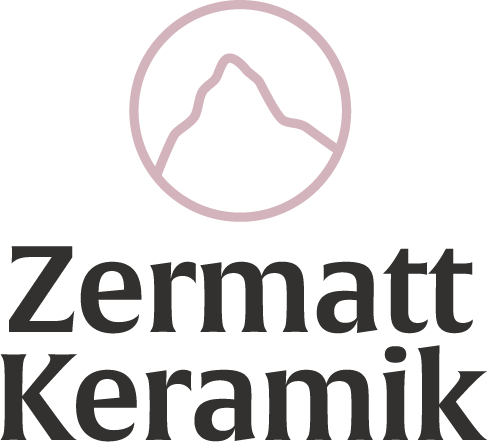Handmade pottery production process
Posted on December 06 2021,

Handmade pottery production process
Many people ask me how long it takes me to make a ceramic piece. The production process, i.e. the sequence of steps, is the same for every product in our studio. The times of the work steps vary depending on the type of piece. The way the blanks have to be treated is also individual.
For example, the drying phase of a plate is more time-consuming than that of a cup, because the plate has to be turned half upside down so that it does not warp during drying and remains round. If this moment is missed, it cannot be undone and the plate has to be remade!
In general, I can say that making handmade ceramics takes a lot of feeling and perseverance. Here are some facts and figures that I hope will help you understand this better:
Workflow of creating a plate:
I start with the clay preparation
(homogenizing the plastic clay by kneading) = 3min
After kneading, shaping begins on the potter's wheel:
1st turning of the plate = 5min
+ subsequent drying phase = up to one day
- turning of the plate (trimming) = 5-8min
+ subsequent drying phase = up to two days
So after 3 days, the plate is now ready for the first firing at 980°C.
The plate is placed in the kiln and the kiln is started with a maximum speed of 150°C/h. Once the maximum temperature has been reached, there is temperature control. Once the maximum temperature is reached, a holding time of 30min and the following cooling down by 150°C/h takes place.
After a total of 5 days, the plate is now pre-fired and ready for glazing. At the moment it is porous, like a flower pot, and is now glazed by dipping or by applying it with a brush. This takes 3-5 minutes of active work per plate, depending on the customer's wishes.
Then the glazed plate is put back into the kiln and fired to 1260°C under the same conditions as our first firing (max. 150°C/h).
Our plate has a lot behind it and is now completely finished after 8 days at the earliest.
Risks and defects occur during the production:
This is a huge topic in the ceramic world that I could write a book about. Briefly explained, in each of these different steps, there are many manners and hand skills that one must master in order to avoid mistakes. If a plate comes out of the oven and has a crack that wasn't there before the firing, that can have 12 different backgrounds, and that's just one of many examples of mistakes.
Experience comes with time and you need a lot of sensitivity to be able to prevent mistakes and you have to give the material enough time to develop its quality. Especially if it is not a mass production, where the materials are calculated to the gram and times to the second, each piece is dealt with individually.
I hope this information can help you understand how unique, exciting, and time-consuming the craft of ceramics is. If you have any questions about this subject, I am very open and also interested in sharing my knowledge and exchanging ideas. It is important to me to show the material and the process to create awareness in the viewer so that they can see and appreciate the story behind our handmade pieces.
